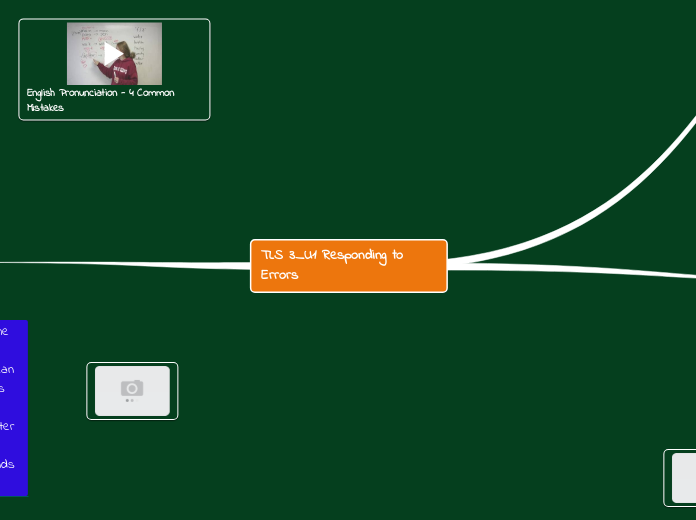TLS 3_U1 Responding to Errors
Pronunciation errors.
She workED all night with her homework. She studies Shemistry TOUGH life She washED a dirty carpet last night
Ways of responding to errors
How?
I help students to pronounce words indicating the gestures and movements they have to do to pronounce properly.
When?
I correct these errors at the end of the class or later, because I let my students speak.
How to indicate an error has been made?
Tell them later Phonetic chart A list with erros to remember the things I have to correct.
Grammar errors.
I want that you give me a pencil.
She have been to Paris twice
He ate last night a hamburger.
The dog is black and the dog is angry. The dog is furious. It is the dog of my brother.
Ways of responding to errors
How?
I help them to make their own corrections in order they discover the answer.
When?
I do it immediately. I do it this way because in this kind of errors it is necessary to improve their accuracy through the use of language.
How to indicate an error has been made?
Tell them Facial expressions Gesture with facial expression Finger correction Draw a line time on the board
Lexical errors
I’m boring. Can we go to the park?
Mario is embarrassed, he can not talk to other students easily.
Actually, our world is a better place than yesterday
He introduced me her friends yesterday morning.
Ways of responding to errors
How?
I tell them the correction and I explain the meaning For example:
Actually doesn’t mean actualmente, use “nowadays or currently”
When?
I do it immediately. It is necessary to improve accuracy through the use of language.
How to indicate an error has been made?
Tell them
Gesture with facial expression
Finger correction











